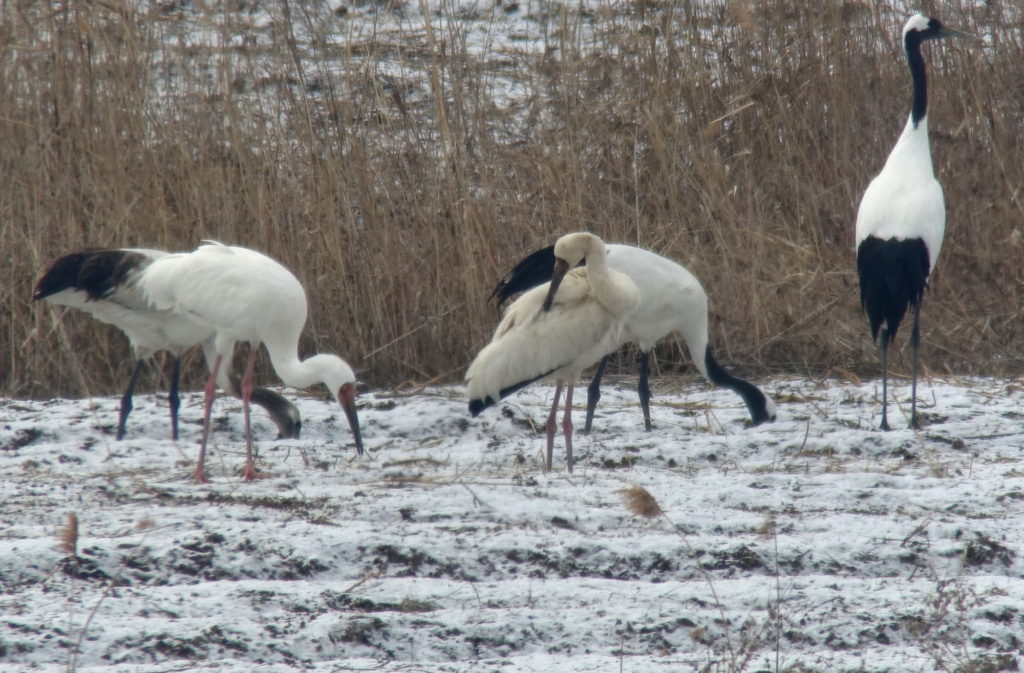Bird News from Nial Moores with Peter Humphrey (“The Dagestan Man”).
Five days of high-quality birding together with Peter Humphrey (a specialist in the birds and culture of Dagestan) in weather that ranged from typically cool, with a high of +4C on 2nd, to exceptionally warm, with the afternoon temperature soaring to +21C on 4th before heavy overnight rain and strong winds on 5th. The boat trip on 3rd off from Daejin (Goseong County) was happily shared with Subhojit Chakladar, and through the help of Ha Jung Moon, with You Jin Sim, Kim Eojin and Koo Hye-In from the University Birding Club.
Highlights among 135-140 bird and three mammal species logged during our five days together included two Siberian Crane at Yeoncheon, and an adult Steller’s Sea Eagle and 5+ Scaly-sided Merganser on the Han River on the 1st; in Goseong County, a record-breaking count of Red-necked Grebe on 2nd and five Yellow-billed Loon, five species of alcid, a Harbour Seal and a mixed flock of Japanese and Bohemian Waxwings on 3rd; c.50 Hooded Crane, 12 Oriental Stork, an Amur Leopard Cat and a Snow Goose at Seosan and eight Swan Goose, a puzzling curlew and 3,000 Baikal Teal at the Geum on 4th; and c. 10 Yellow-bellied Tit, two Lesser White-fronted Goose, and close-up looks at four Baikal Teal and 40+ Daurian Jackdaw on the 5th.
Species and counts of note included:
Snow Goose Anser caerulescens. An adult was at Seosan on 4th.

 Adult Snow Goose with Tundra Bean Geese © Nial Moores
Adult Snow Goose with Tundra Bean Geese © Nial Moores
Swan Goose Anser cygnoides. VU. Eight were in the Geum Estuary still on 4th.
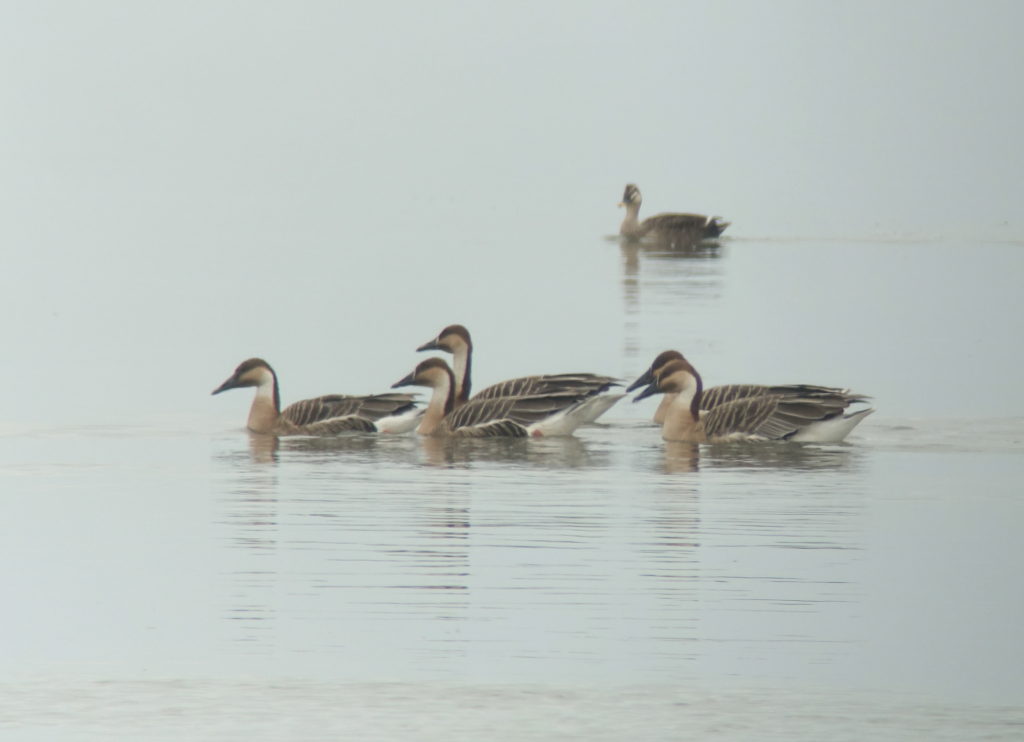 Swan Geese with Eastern Spot-billed Duck Anas zonorhyncha © Nial Moores
Swan Geese with Eastern Spot-billed Duck Anas zonorhyncha © Nial Moores
Taiga Bean Goose Anser fabalis. The largest concentration was of 800 on the Han River on 1st.
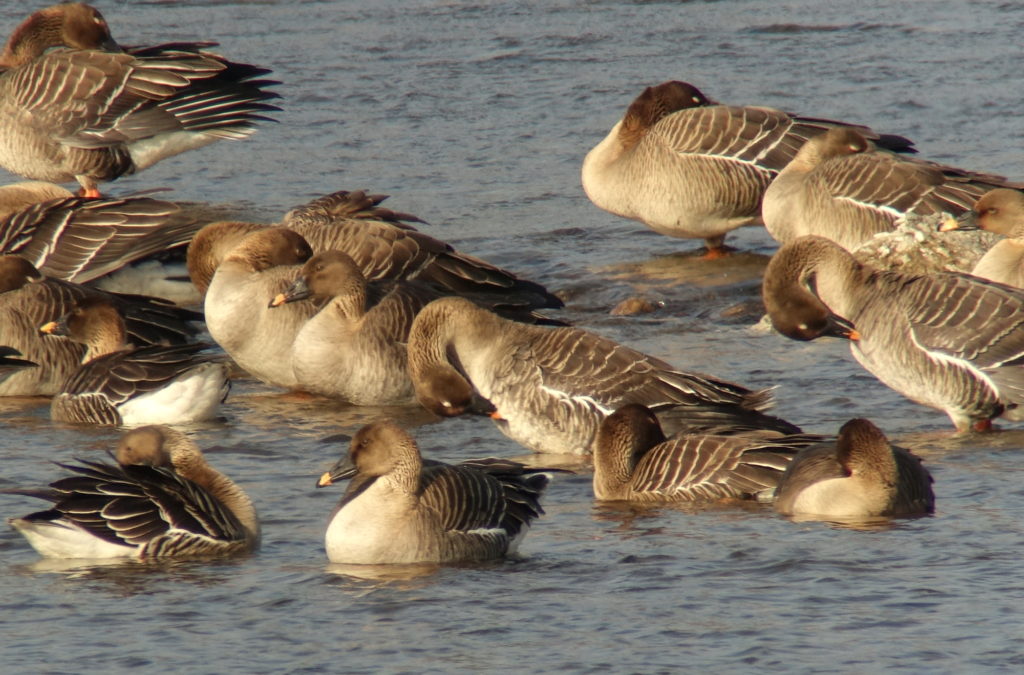 Taiga Bean Goose © Nial Moores. Note the massive, bulky look; the shallow lower mandible, more or less equal in thickness from the base to the orange bill-band; and the warmer tones to the lower neck.
Taiga Bean Goose © Nial Moores. Note the massive, bulky look; the shallow lower mandible, more or less equal in thickness from the base to the orange bill-band; and the warmer tones to the lower neck.
Tundra Bean Goose Anser serrirostris. Low thousands were recorded in total, with the majority of these at Seosan and close to Gunsan and Saemangeum on 5th.
 Tundra Bean Goose, with Greater White-fronts © Nial Moores
Tundra Bean Goose, with Greater White-fronts © Nial Moores
Greater White-fronted Goose Anser albifrons. The most numerous goose encountered during the five days, with probably >10,000 scanned through in our search for Lesser White-fronted Goose.
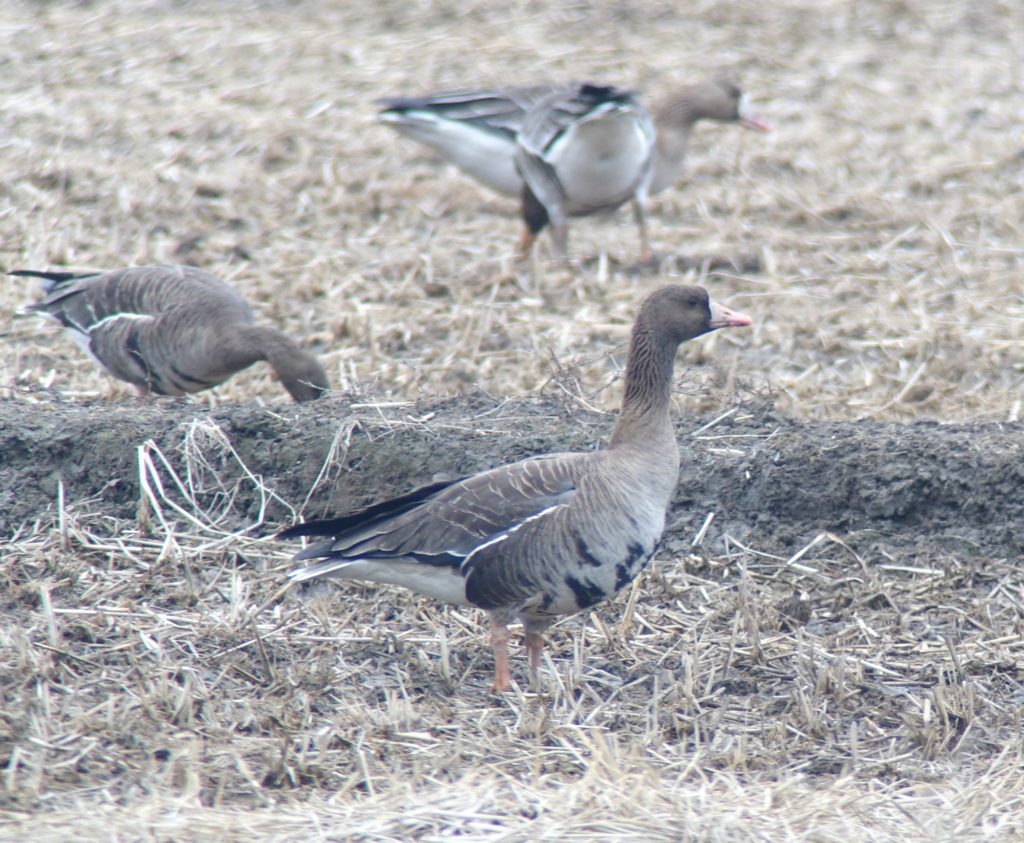 Greater White-fronted Goose © Nial Moores…A still unresolved taxonomic challenge.
Greater White-fronted Goose © Nial Moores…A still unresolved taxonomic challenge.
Lesser White-fronted Goose Anser erythropus. VU. One First-winter and one adult were found in a flock of c. 2,500 Greater White-fronted in Gimje on 5th.
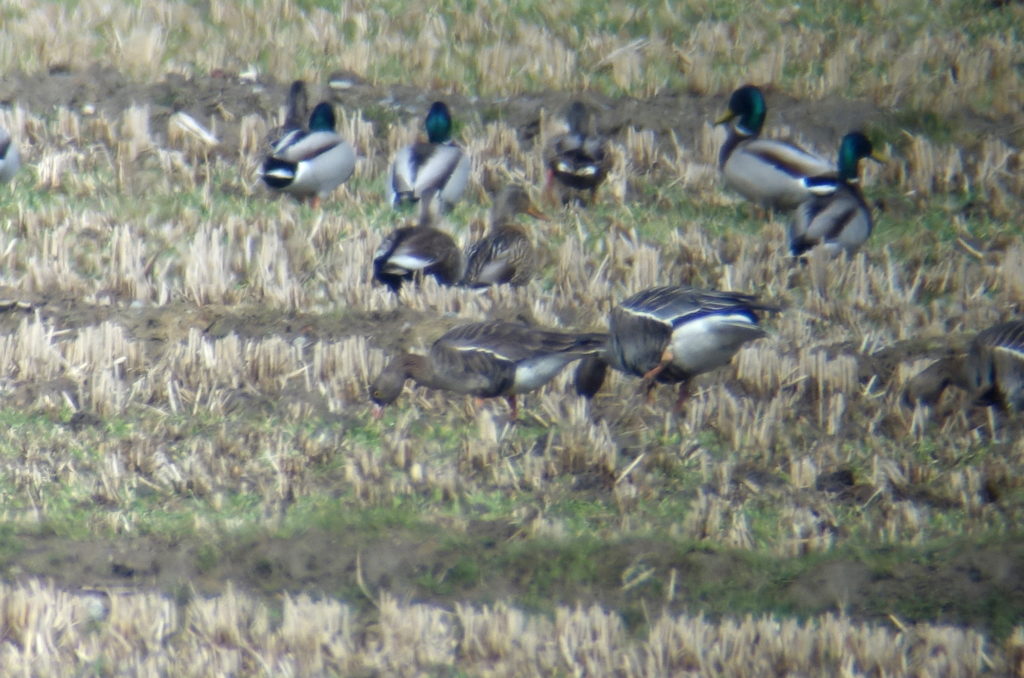 First-winter Lesser White-fronted Goose (on left) with Greater White-fronted Goose and Mallard Anas platyrhynchos © Nial Moores
First-winter Lesser White-fronted Goose (on left) with Greater White-fronted Goose and Mallard Anas platyrhynchos © Nial Moores
Baikal Teal Sibirionetta formosa. It appears that very few birds reached Korea this winter (unless at sites largely unvisited by birders?). In addition to a couple of singles, we found only three thousand on the Geum River on the 4th (including one leucistic bird) and 4-5 on a small pond near to Kimje on 5th.
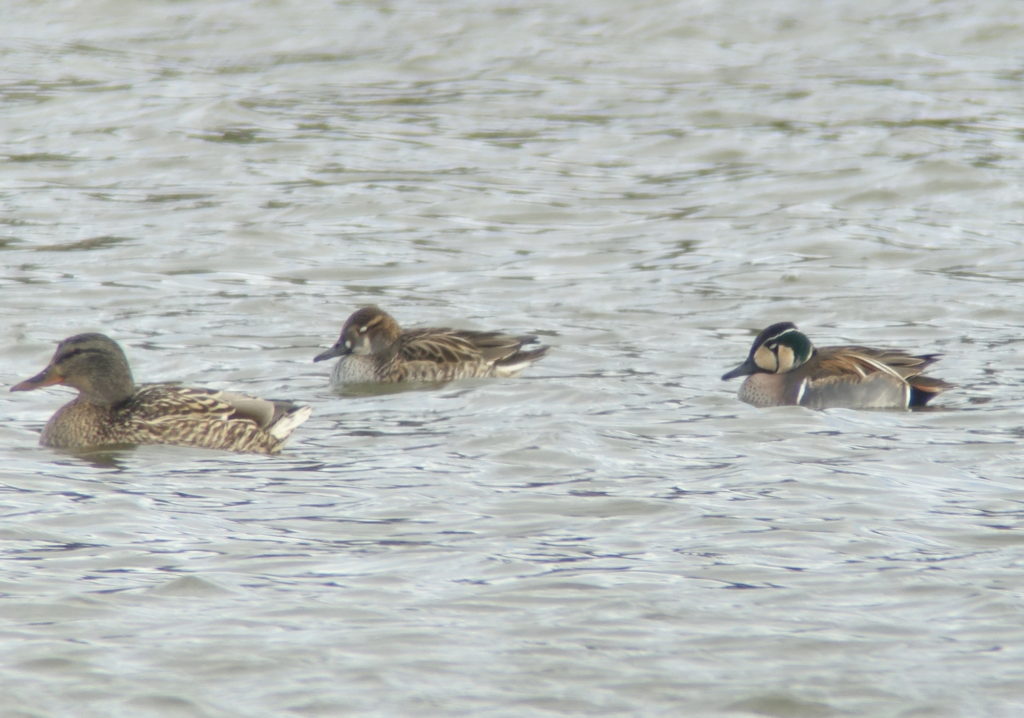 Female and male Baikal Teal with Mallard (on left) © Nial Moores
Female and male Baikal Teal with Mallard (on left) © Nial Moores
Common Pochard Aythya ferina. VU. At least 450 were on the Han River near Paldang on the 1st; and several hundred were on the Geum River on 4th.
Lesser Scaup Aythya affinis (?) A possible male was out on the Geum River on 4th, in a mixed flock of >1,000 Tufted Duck and Common Pochard. Unfortunately distance and a lack of time prevented us from studying or photographing the bird properly. In brief long-range views, the bird was obviously smaller (~10%) than most of the surrounding Tufted Duck and even more so than a couple of Greater Scaup; the head was peaked, with a small rear “bump”; the bill looked strikingly pale; and there was a suggestion of vermiculations extending onto the flanks.
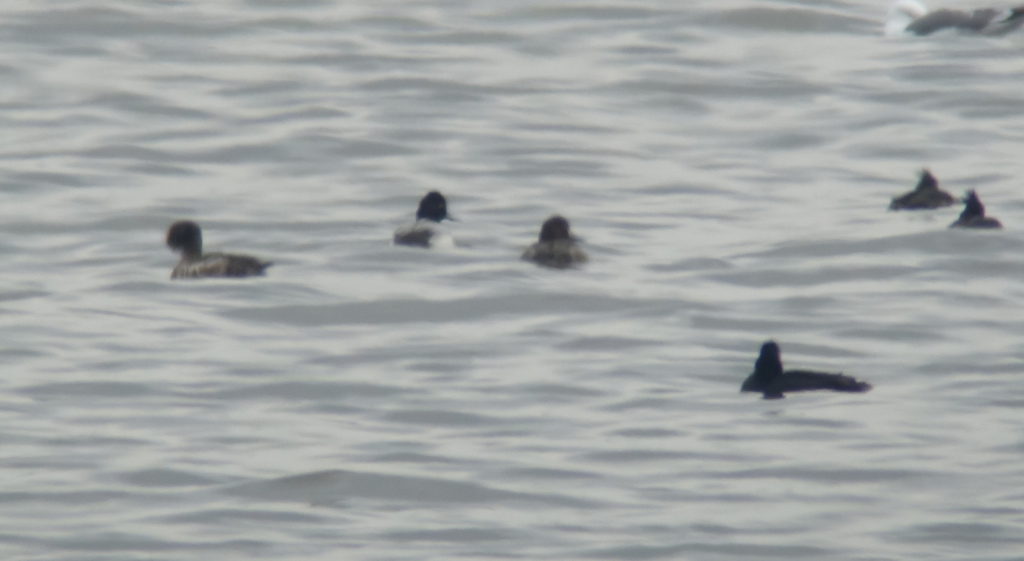 Possible Lesser Scaup (second on left) © Nial Moores, with female Greater Scaup Aythya marila (on right and perhaps also on left) and Tufted Ducks Aythya fuligula
Possible Lesser Scaup (second on left) © Nial Moores, with female Greater Scaup Aythya marila (on right and perhaps also on left) and Tufted Ducks Aythya fuligula
Scaly-sided Merganser Mergus squamatus. EN. At least five were seen at close range on the Han River on the 1st, including a female swimming alongside a male with neck flattened – before the male climbed on top, gripping her neck tightly with his highly-serrated bill.

Yellow-billed Loon Gavia adamsii. NT. One or two were seen off Geojin on 2nd, and five were seen off the same coast on 3rd (including three from land and two from the boat). Based on counts (of 32+) made last year just north of the inner border of Korea – about 20km north of Geojin- it seems that early March is the time to see this species in Korea.
Pterodroma sp (?) At dawn on the 2nd, NM ‘scoped two birds from land that were flying at long range from shore off a headland at Yangyang. The first was watched for about 30 seconds flying north in almost calm conditions, with a sweeping, undulating flight, rising from the surface up to 5m or more, and then back again, before being joined by a second bird flying in an identical manner – unlike any other birds that day and unlike any typical species in Korean waters (though a similar flight to that seen several times in overwintering dark shearwaters in windy conditions – all of which are considered most likely to be Short-taileds). During views of a minute or more in total, the first bird was initially considered most likely to be an odd-flying gull (perhaps a Kittiwake), but as the bird progressed north into better light and was joined by a second identical-looking bird flying in the same way, the perhaps default ID shifted to Streaked Shearwater. However, the flight was strikingly “wrong”; and both looked much more slender and agile and narrower-winged than Streaked Shearwater. They were too distant to see much plumage detail, but at 70X zoom both had white underparts (ruling out Short-tailed Shearwater) and pale underwings framed darker, with dark (perhaps black?) on the head and mid-grey-brown underparts.
Red-necked Grebe Podiceps grisegena. At least 2,510 were counted in ten-bird blocks from one point on the Geojin headland on 2nd. This represents 5% of the Flyway population and is much higher than any count of this species in Korea known to us. Low hundreds were also seen from the boat on 3rd, many of these 10km north of the headland. These counts far exceed a conservative peak count of 600 recorded by Moores et al. (2017) in the same waters of Goseong county in 2015-2017, and a high count of 1,627 reported nationwide during the January 2010 MOE winter bird census (but only 11-355 in all subsequent nationwide counts), with the majority of these claimed from further south along the coast.
Horned Grebe Podiceps auritus. VU. One in near-breeding plumage was with a group of 30+ Black-necked Grebe off Daejin on 3rd.
Oriental Stork Ciconia boyciana. EN. A total of 12 were seen in the less-disturbed parts of Seosan on 4th, most distantly. Only one was seen to carry jewelry.
Steller’s Sea Eagle Haliaeetus pelagicus. VU. An adult overflew us at the usual site on the Han River on the 1st.
Eastern Water Rail Rallus indicus. One was heard calling insistently at Yangyang on 2nd.
Siberian Crane Leucogeranus leucogeranus. CR. Two, out of a maximum five recorded there during this winter, were still present at Yeoncheon on 1st.
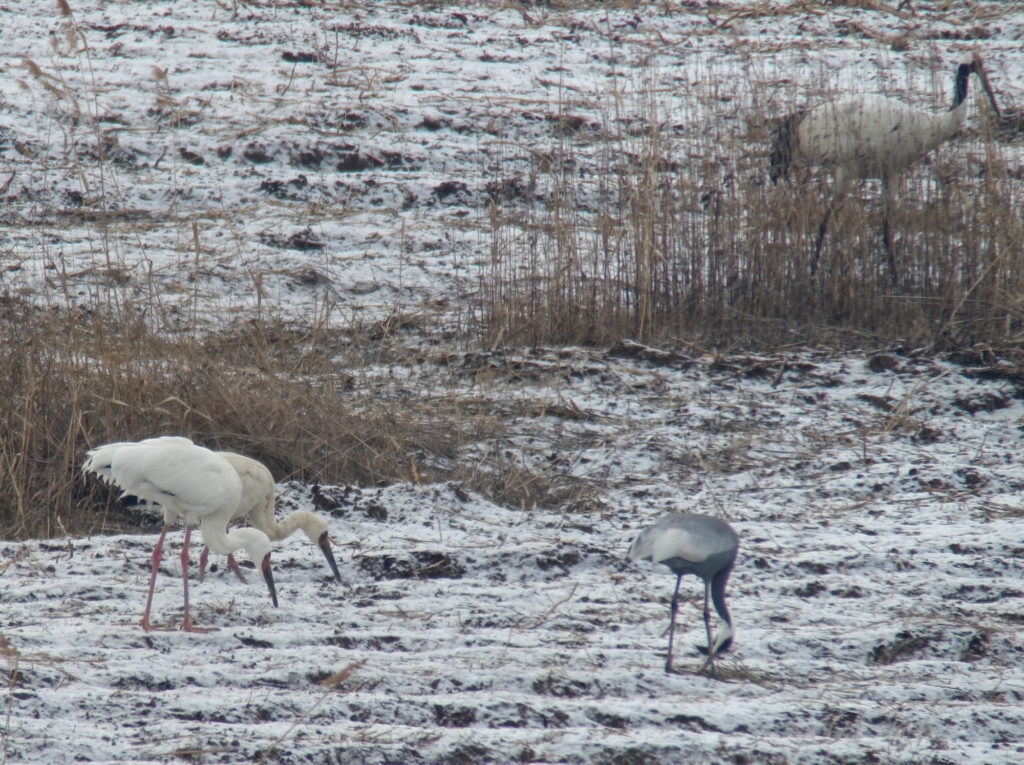

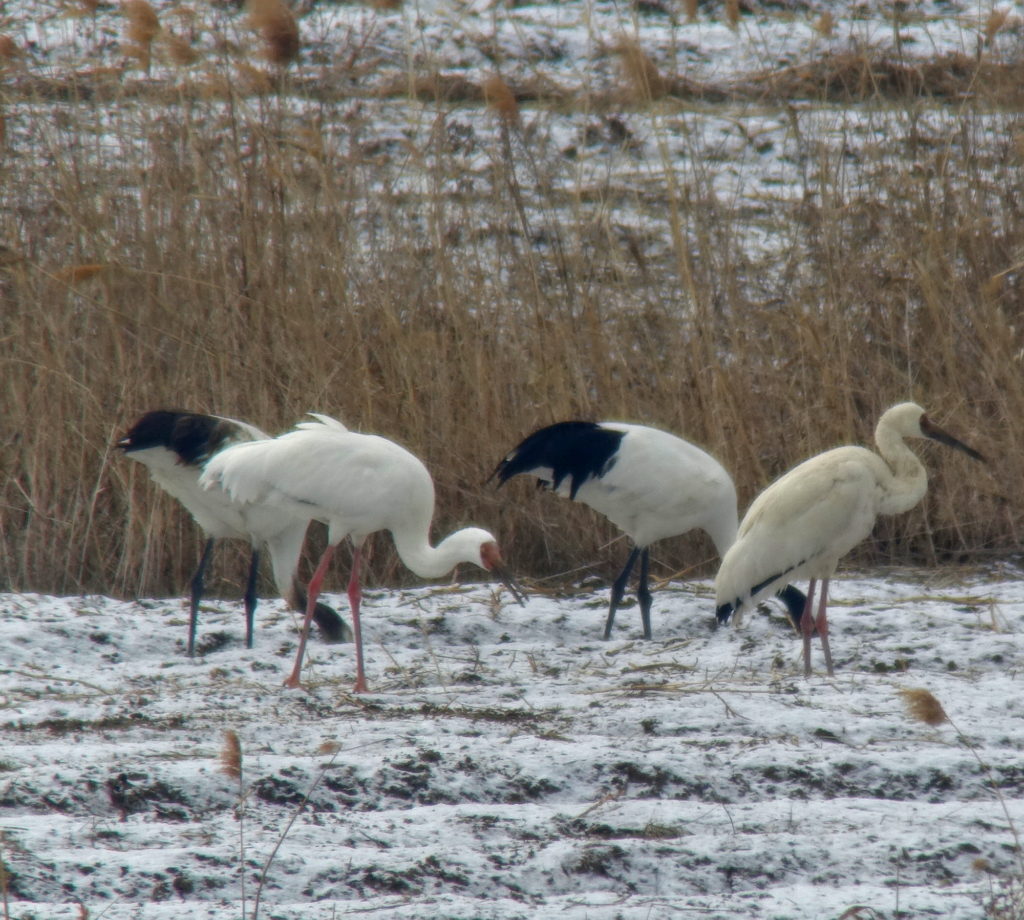
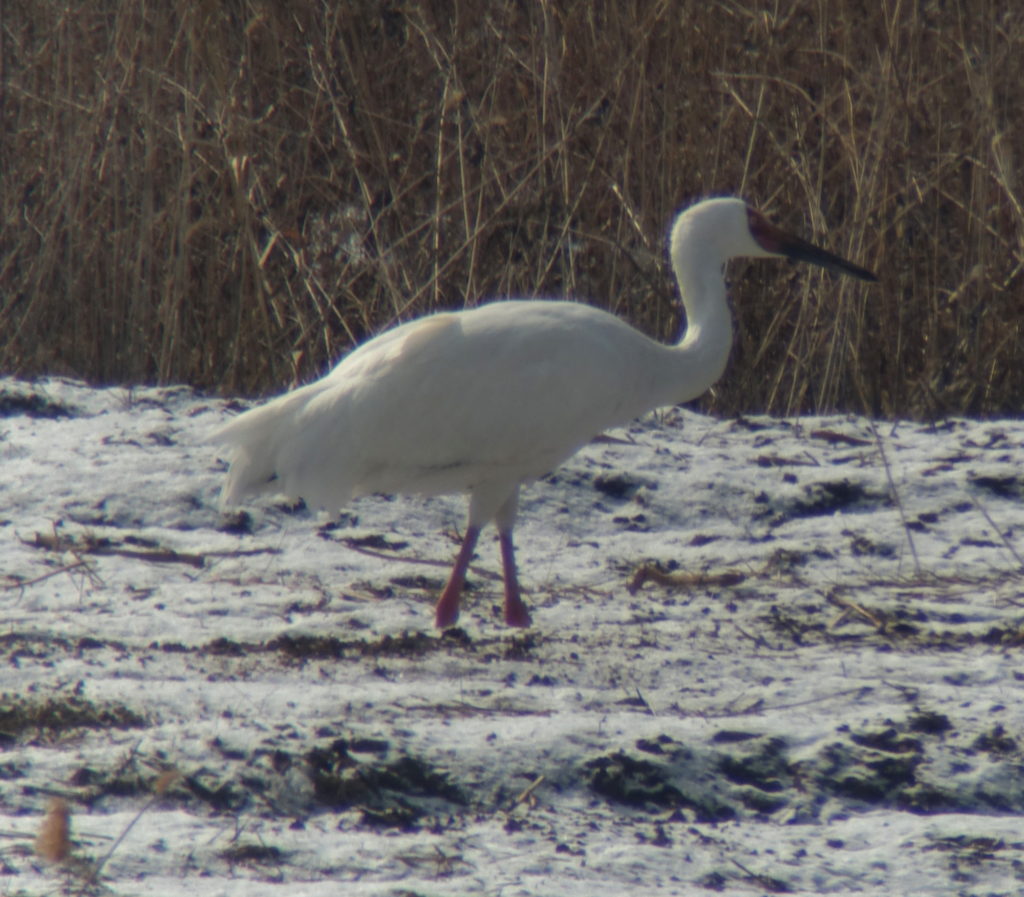 Siberian Crane © Nial Moores, with White-naped (top) and Red-crowned Cranes
Siberian Crane © Nial Moores, with White-naped (top) and Red-crowned Cranes
White-naped Crane Antigone vipio. VU. 115+ were at Yeoncheon on 1st.
Red-crowned Crane Grus japonensis. EN. 51+ were at Yeoncheon on 1st.
Hooded Crane Grus monacha. VU. c.50 were at Seosan on 4th.
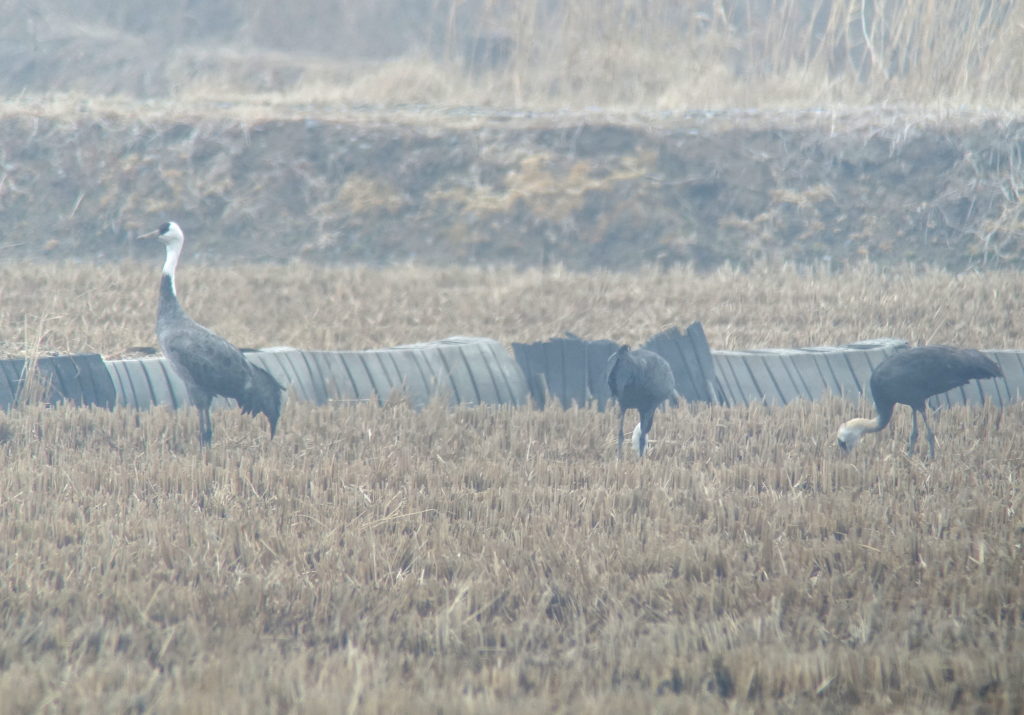
Little Ringed Plover Charadrius dubius. One at Seosan on 4th was the personal first of the year.
Eurasian Curlew Numenius arquata. NT. A remarkably odd-looking Second Calendar-year curlew was seen briefly feeding along the tide edge at the Geum Estuary on 4th. Slightly smaller than other Eurasian Curlew seen in direct comparison (all of which flew off before I had time to digiscope them), this bird presumably had a broken bill, and showed several features that might be shared with the near-extinct Slender-billed Curlew (in addition to the short, slender-based bill and quite dark-looking legs, the bird also had a stronger than usual head pattern, and apparently quite heavily feathered tibia, almost to the “knee”). Although Slender-billed was mentioned jokingly while watching the bird, the head shape, length of the tarsi and bulk of the bird looked much as expected in Eurasian Curlew, and views were insufficient to see truly diagnostic features such as the pattern on the underside of the primaries. Nonetheless – this seems to be a bird worth looking out for…
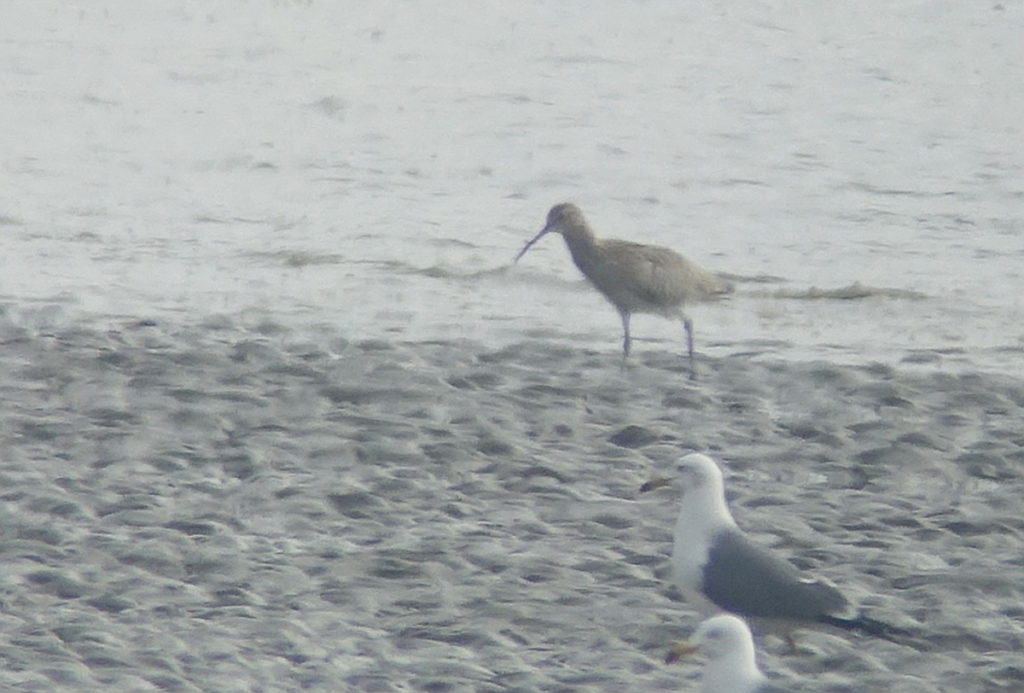
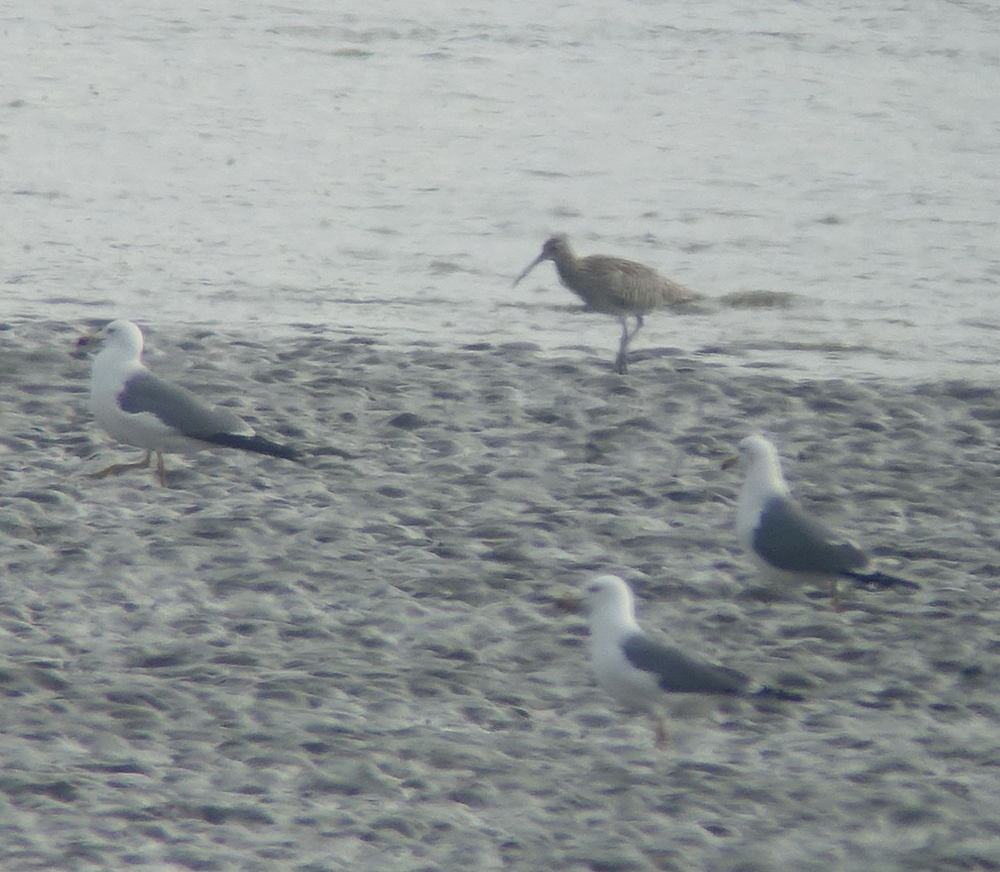 Odd curlew with Black-tailed Gull Larus crassirostris © Nial Moores
Odd curlew with Black-tailed Gull Larus crassirostris © Nial Moores
Thick-billed / Brunnich’s Murre Uria lomvia. One or two were seen off Yangyang on 2nd (NM only).
Spectacled Guillemot Cephhus carbo. Two on 2nd and three on 3rd off Geojin.
Long-billed Murrelet Brachyramphus perdix. NT. Two on 2nd and one on 3rd off Geojin.
Daurian Jackdaw Coloeus dauuricus. c. 40, including a couple of full adults, were with a large Rook flock near Iksan on 5th.
Bohemian Waxwing Bombycilla garrulus. Ten or so were with Japanese Waxwing in Daejin on 3rd.
Japanese Waxwing Bombycilla japonica. NT. 20-25 were in Daejin on 3rd, feeding on rotten persimmons and by flycatching (with many thanks to Subhojit Chakladar for the phone call alerting us to their presence!).
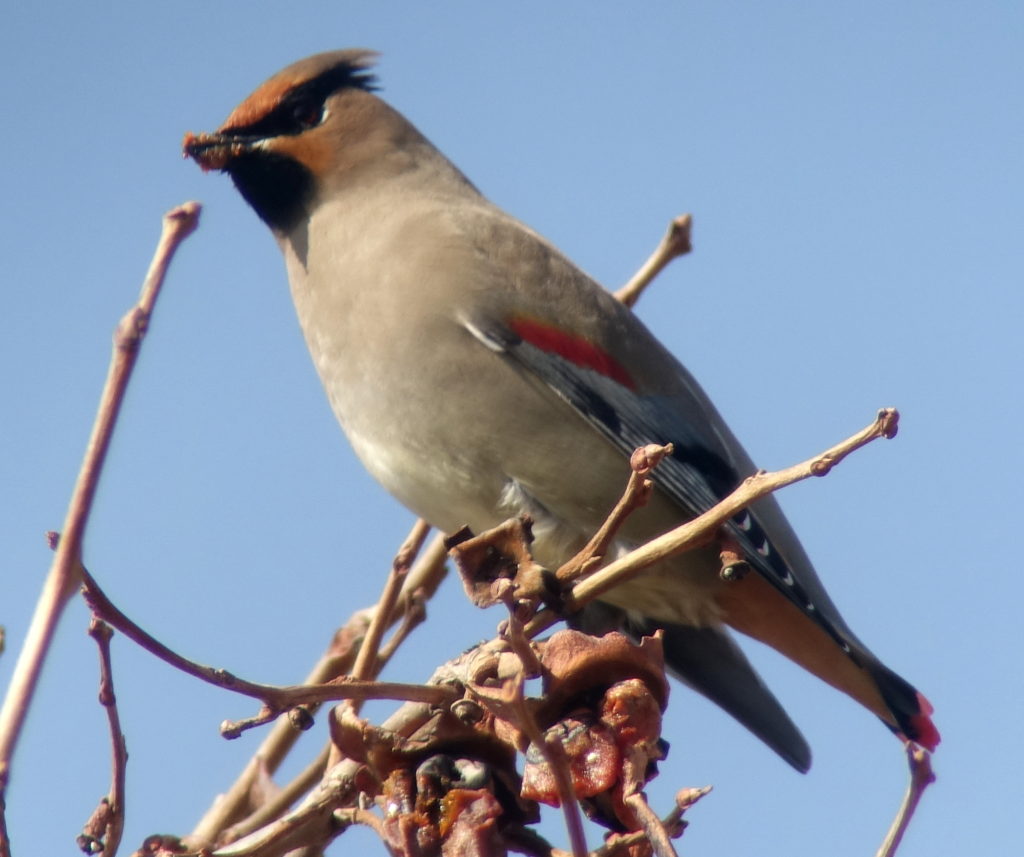
Yellow-bellied Tit Pardaliparus venustulus. Despite the heavy overcast, a group of about ten of these heavy-billed and big-footed birds gave excellent views in Gunsan as they fed on the ground on pine seeds on 5th (this is only the second time for me to see them feed in this way; the only other time was in Busan in a severely cold spell earlier this winter).
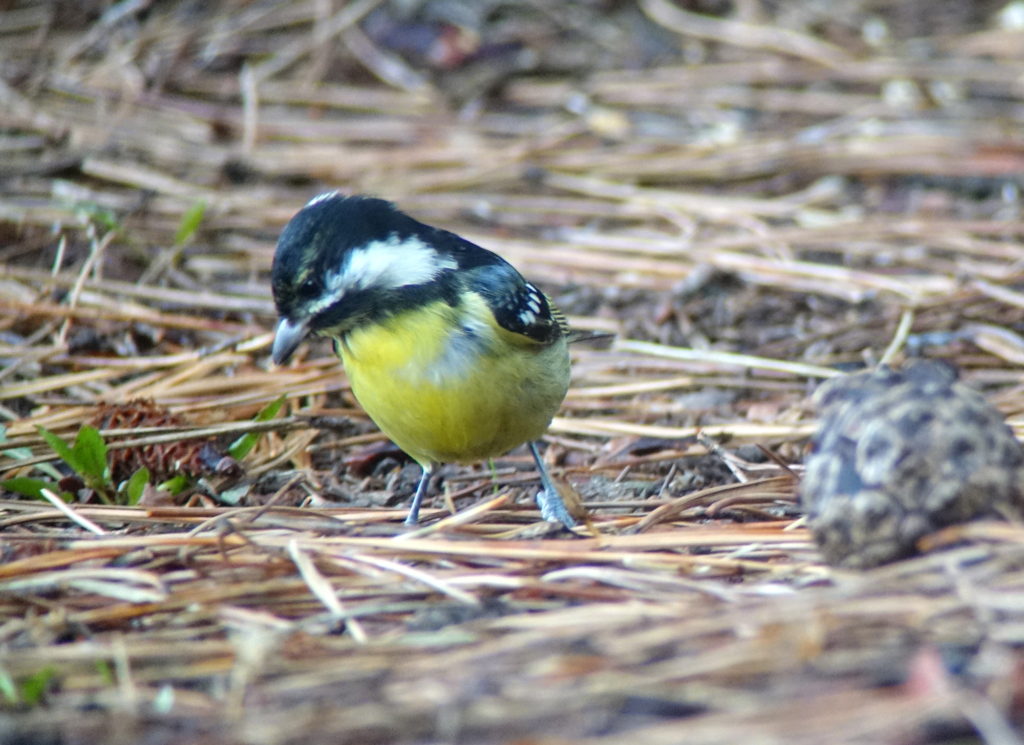


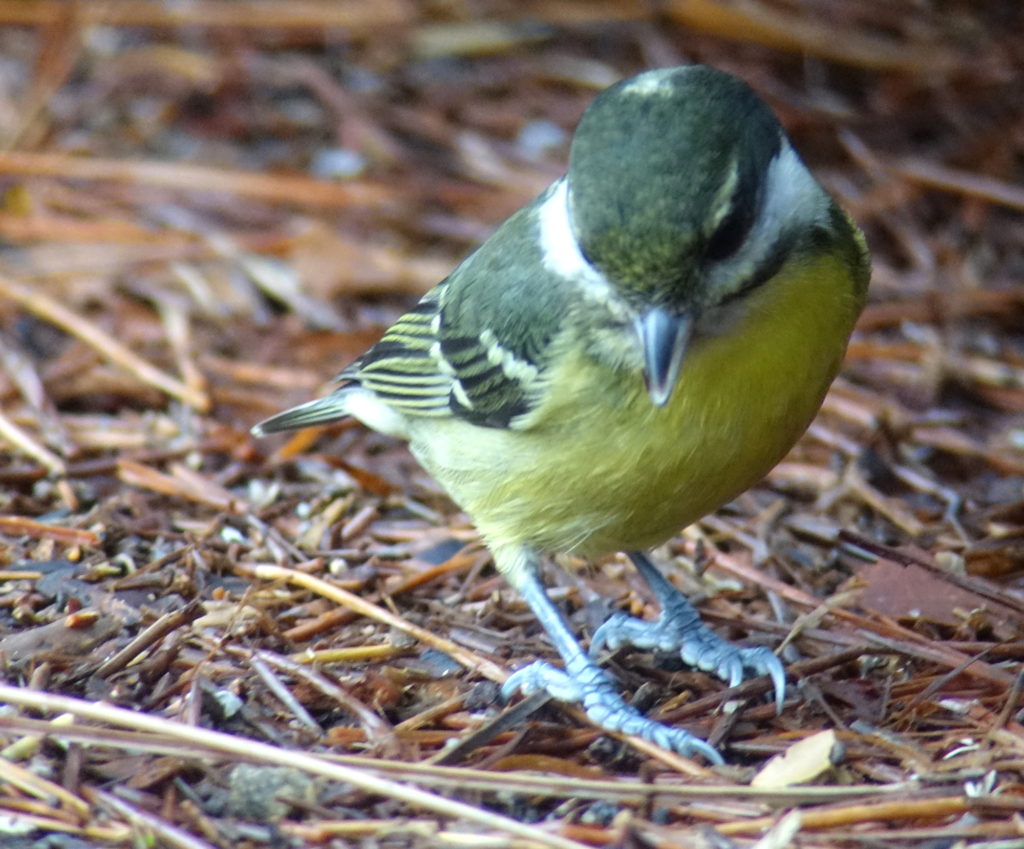
Barn Swallow Hirundo rustica. Two – the personal first of the spring – were seen near Gimje on 5th.
White Wagtail Motacilla alba. One ocularis – my personal first of the spring – was at Yangyang on 2nd.
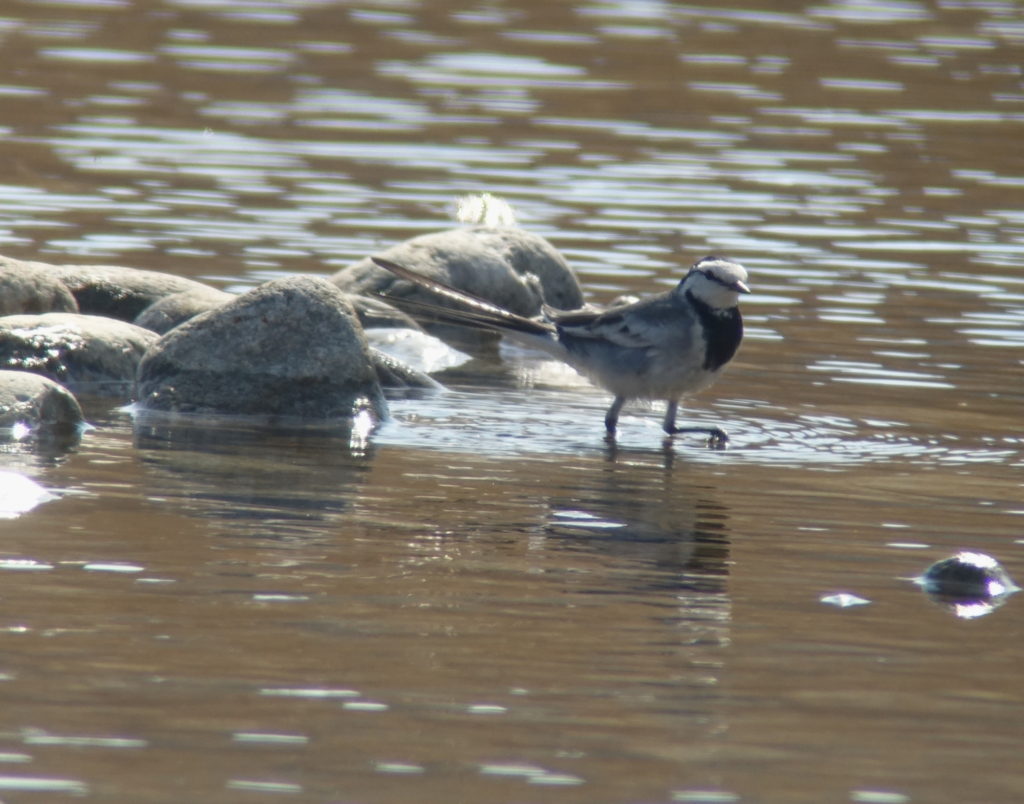
Ochre-rumped Bunting Emberiza fucata. NT. Two were heard/ poorly seen at Seosan on 4th.
Reference
- Moores, N., Choi H-A. & Seliger, B. 2017. Seabirds in the Inner Border Area of Korea – Goseong County, Gangwon Province. A Birds Korea and Hanns Seidel Foundation report on seabird research (October 2017).

